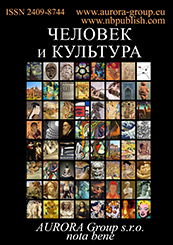Культура и власть
Правильная ссылка на статью:
Завьялова Н.А.
Агональность в культуре Китая: от древности до наших дней
// Человек и культура.
2018. № 3.
С. 16-23.
DOI: 10.25136/2409-8744.2018.3.26374 URL: https://nbpublish.com/library_read_article.php?id=26374
Аннотация:
Статья посвящена культурному феномену агональности – состязательности – который мы рассматриваем как необходимый компонент филогенеза, онтогенеза и культурогенеза. Объектом исследования являются соревновательные практики и стратегии Китая с древнейших времен до современности. Предмет исследования – специфика конкурентного преимущества Китая, его роль в осуществлении культурной преемственности. В ходе исследования автор рассматривает китайскую легенду о происхождении лунного календаря, трактат «Искусство войны» Сунь-цзи, культурную доктрину современного лидера КНР Си Цзипиня «Китайская мечта», а также карикатуры современных китайских художников. В статье присутствуют элементы сопоставительного исследования, направленные на то, чтобы вскрыть общие механизмы состязательности в культуре Древней Греции, Рима и Китая. Основной метод работы – системно-аналитический подход к культуре, позволяющий вскрыть стратегии агональности, проявляющиеся на разных уровнях культуры. Значимым представляется вывод автора о том, что агональность является мощным способом освоения мира, проявляющим себя не только в условиях борьбы за жизнь, но и в театре, произведениях устного народного творчества, изобразительном искусстве. Представляется чрезвычайно важным подготовить к состязательности во взрослом мире подрастающее поколение, поскольку даже в минуты отдыха человек прибегает к состязанию, желая доказать свое превосходство над остальными.Результаты исследования применимы к различным областям культурологии, поскольку они позволяют изучить детерминанты китайского национального самосознания.
Ключевые слова:
состязание, агональность, культурогенез, культурная преемственность, фольклор, культура, культурная идентичность, исследования культуры, кросс-культурное исследование, традиция
Abstract:
This article is dedicated to the cultural phenomenon of agonality – competitiveness, which is viewed an essential component of phylogenies, ontogenesis, and culturogenesis. The object of this research is the competitive practices and strategies of China from the ancient time to present. The subject is the specificity of China’s competitive advantage, its role in realization of the cultural succession. The author examines the Chinese legend about the origin of lunar calendar, treatise “The Art of War” by Sun Tzu, cultural doctrine of the current leader of PRC Xi Jinping “Chinese Dream”, as well as caricatures of the contemporary Chinese artists. The article also contains the elements of comparative analysis aimed at revealing the common mechanisms of competitiveness in the culture of Ancient Greece, Rome and China. The main method of research is the systemic-analytical approach to culture that allows disclosing the strategies of agonality, which manifested at various levels of culture. A conclusion is made that agonality is a powerful method of development of the world revealing itself not only in terms of fighting for life, but also in theatre, verbal folklore and visual art. The author underlines the ultimate importance of preparing the young generation to competitiveness in the adult world, as even during the leisure time a person recourse to a competition, desiring to prove his supremacy over the others. The results of research can be applied in various fields of culturology for examining the determinant of the Chinese national self-consciousness.
Keywords:
cultural studies, cultural identity, culture, folklore, cultural continuity, cultural genesis, agonality, competition, cross-cultural research, tradition
 Статья опубликована с лицензией Creative Commons Attribution-NonCommercial 4.0 International License (CC BY-NC 4.0) – Лицензия «С указанием авторства – Некоммерческая».
Статья опубликована с лицензией Creative Commons Attribution-NonCommercial 4.0 International License (CC BY-NC 4.0) – Лицензия «С указанием авторства – Некоммерческая». Рус
Рус













 © 1998 – 2024 Nota Bene. Publishing Technologies. NB-Media Ltd.
© 1998 – 2024 Nota Bene. Publishing Technologies. NB-Media Ltd.




